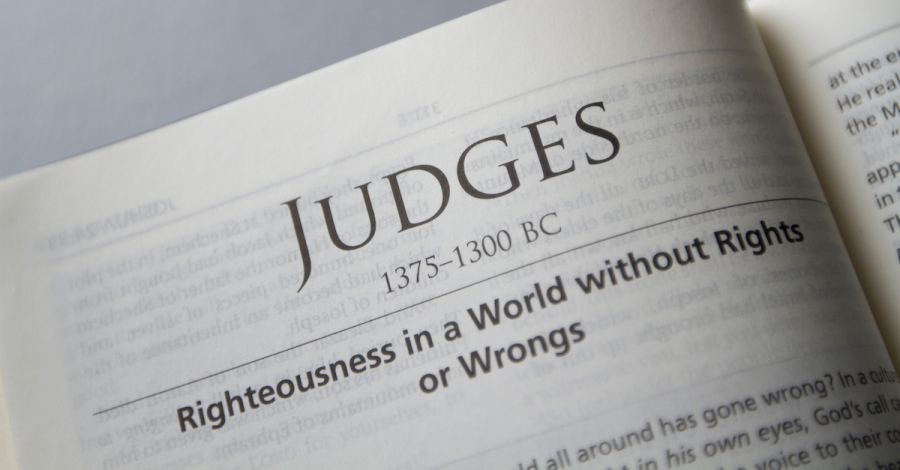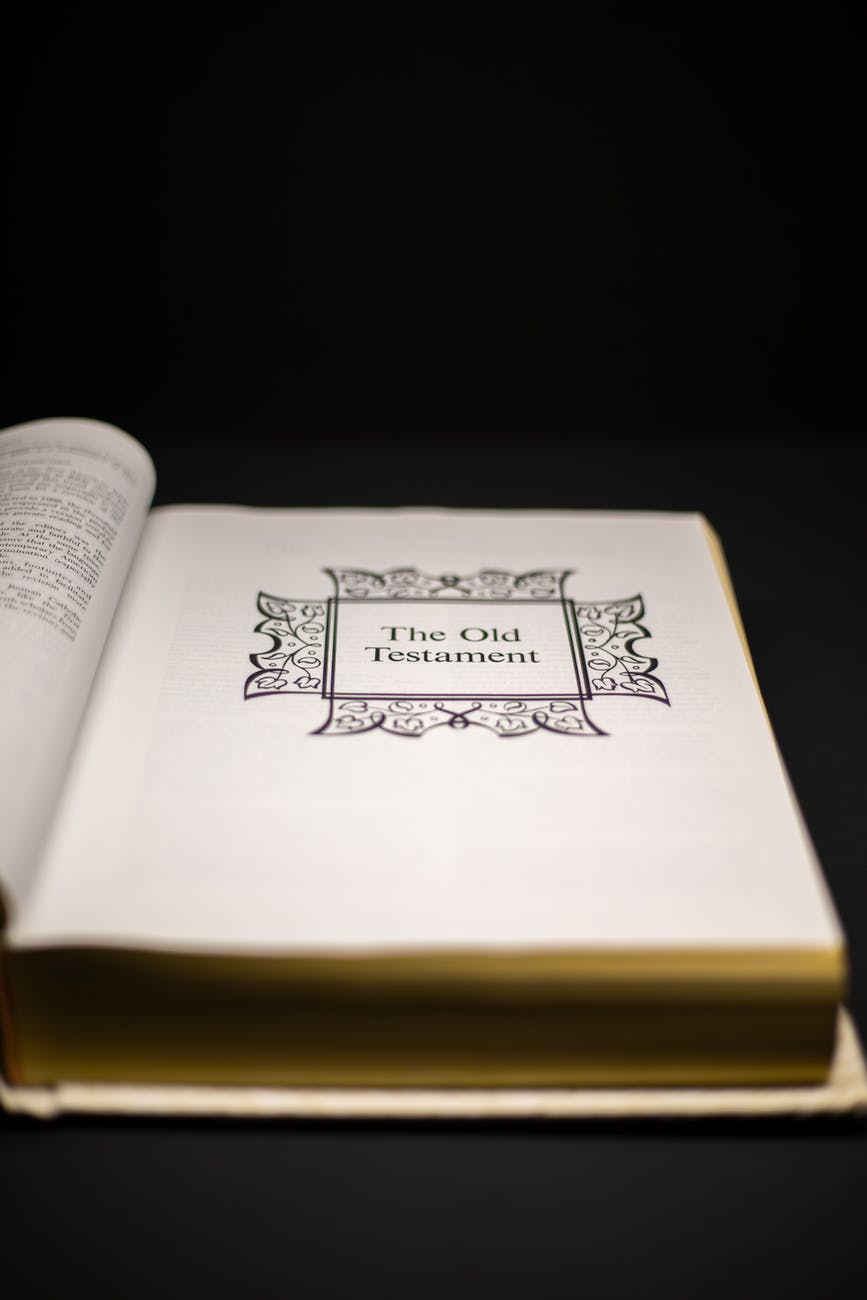Introduction
What happened in the books of Judges (and Ruth) when everyone did what was right in their own eyes? These two Old Testament books show the type of chaos and disorder that mankind is capable of when they rebel from the will of God, ignore the law, and seek self-gratification. By seeking what is right in his or her own eyes, man chooses self-interest over God’s purpose for humanity. This inevitably leads to chaos that rightly entreats divine justice and the wrath of God. Interestingly, the book of Ruth shows a different option for those faithful to the God of Israel and what that devotion and obedience can afford to those whom choose good over evil.

Timeline
What makes these two books of the Old Testament relevant to each-other is their timeline. The events transpiring in the book of Judges happens alongside with the Ruth narrative. It is here that we see the dichotomy of faithfulness (Ruth) pitted alongside lawlessness (Judges). In this time the people of Israel were engrossed in apathy and apostasy. They lost their divine allegiance to Yahweh and delved into all kinds of legalisms, sinfulness, and idolatry. John Reed writes: “Those days were the dark ages of Israel’s history. The victories of Joshua had been followed by periods of spiritual declension with but brief periods of revival. As the time of the Judges wore on, the apostasy deepened till the book ended in corruption and bloody civil strife.”[1] This led to periods of great defeat, anguish, and suffering for the people of Israel, all of which pointed toward the coming Monarchy.

The Consequences of Apostasy
During this time, as the people of Israel did what was right in their own eyes (Judges 21:25), what was once a unified people under Yahweh, now spiraled down due to self-indulgence and moral decay. What was produced from this was religious and moral chaos.
The first is religious chaos. We first see the making of an Idol from stolen silver in Judges chapter seventeen. Then the son acquires a Levite priest. The third segment in this religious chaos ends with the tribe of Dan. The tribe steals the idol and the Levite priest. This culminates in an interaction where the man who stole the silver, built an idol, acquired a priest, now retreats in humility.[2] All this points to the unbelievable religious chaos that arises from turning their back on Yahweh. It exemplifies how far astray man can go without the leadership of God, in this theocratic system.
The second is moral degradation. When Israel did what was right in their own eyes, the law was ignored leading to unbelievable moral degradation among the Israelite people. The end of Judges plays out in rape, murder, and horrific destruction of an entire town ending in marriage capture.
The book of Judges offer two principal lessons:
The first concerns the role of God in history: It describes the course of history as an interaction between God and His people, with God heeding His people’s cries, and saving them through various judges. The second concerns the type of preferred leader: The judges are not depicted as ideal leaders, and their depiction thus paves the way for the establishment of a more successful political institution, namely the monarchy.[3]
We see these atrocities played out in the book of Judges while at the same time the book of Ruth shows a contrasting viewpoint. Taking place at the same time, and general area, Ruth’s story shows how God awards the faithful. Reed laments; “By contrast, the Book of Ruth provides a view of people who acted responsibly, rather than permissively, and with faith in God’s sovereign, superintending control.”[4] Strict allegiance to God awards those faithful to His ways, as we see with Ruth.
Modern Parallels
The parallels between the modern world and ancient Israel are staggering. The belief in God is on the decline throughout the world. In a recent finding from the Pew Research center: “In every country, net losses for Christians are accompanied by net gains for the share of adults who say they have no religion. College-educated people, younger adults, and men are more likely than others to say they are now religiously unaffiliated after having been raised Christian.”[5] This is a scary trend that mirrors the people of Israel, before the establishment of the Monarchy. Secular churches are on the rise and spirituality movements are taking hold across the world where all roads lead to Heaven. This theological ambiguity is reminiscent of purchasing the Levite priest for his gain and expediency.
Rape and forced marriage are still practiced in eastern countries all over the world. Katherine Southwood writes about Judges that “an examination of Deuteronomic laws and biblical narratives confirms that the marriage system of ancient Israel corresponds well to cultures in which marriage by capture occurs in the modem world.”[6] This is highly tied to the valuation of virginity, bride price, male honor, and endogamy.[7] All of these are seen in impoverished or third-world countries primarily in Africa and the middle east.
Idol worship is central to the modern United States of America. It may not be in plain sight such as molding silver into items we worship, or can it be? The cell phone is used by everyone. Each person has their computer at the tip of his/her fingers. It consumes most of our time and energy potential. “For the younger generation, in particular, the mobile phone has become the fundamental mode of communication and is used on a daily basis.”[8] They are molded from commodities and worshiped almost as if they were little gods. How truly different is the modern world from Ancient Israel in the time of Judges?
Ministerial Application
We should all take heed and learn from what becomes of a people who do what is right in their own eyes while ignoring the divine sovereignty of our creator. “One lesson from the lives of the judges is that those who are dedicated to Yahweh can be used by Yahweh.”[9] As Ruth was dedicated to Naomi and the will of God, so can we be successful in this modern time of the Judges where religious chaos and moral decay abide.
This is only accomplished with sound theology based on biblical doctrine. The modern church is rife with feel-good spirituality, prosperity teachings, and self-indulgent theology. God should be the focus, not man/woman. His will and divine purpose are what should be the focus of humanity, not a feel-good attitude toward religion or prosperity from the viewpoint of human gain. Our eyes, human eyes, are riddled with sin, debauchery, and disobedience. This is what Jesus meant in Matthew 6:22 when he said our eyes are the lamp of the body. What we set our eyes on is where are mind is and that proves where the heart is set on! Set the heart on Christ.
Bibliography
Berlin, Adele, Marc Zvi. Brettler, Michael A. Fishbane, and Bernard M. Levinson. The Jewish Study Bible: Advance Reader’s Copy, Uncorrected Sample Pages. New York: Oxford University Press, 2004.
Embry, Bradley. “Legalities in the Book of Ruth: A Renewed Look.” Journal for the Study of the Old Testament 41, no. 1 (September 2016): 31–44. Accessed April 18, 2019. https://www.thecampuscommon.com/library/ezproxy/ticketdemocs.asp?sch=suo&turl=https://search-ebscohost-com.southuniversity.libproxy.edmc.edu/login.aspx?direct=true&db=rfh&AN=ATLAiB8W160930000976&site=eds-live.
“Exploring the Moment of Consumption Using Cell Phones.” Journal of Electronic Commerce Research 6, no. 3 (August 2005): 225–240. Accessed April 18, 2019. https://www.thecampuscommon.com/library/ezproxy/ticketdemocs.asp?sch=suo&turl=https://search-ebscohost-com.southuniversity.libproxy.edmc.edu/login.aspx?direct=true&db=bth&AN=18196096&site=eds-live.
Futato, Dr. Mark D. “Introducing the Old Testament: Its Structure and Story.” OT101. Lecture presented at the Logos Mobile Education, 2013.
LaSor, William Sanford., David Allan. Hubbard, and Frederic William. Bush. Old Testament Survey: The Message, Form, and Background of the Old Testament. Grand Rapids, MI: Eerdmans, 1996.
Macdonald, Nathan. Journal for the Study of the Old Testament 41, no. 5 (2017): 38–39. Accessed April 18, 2019. https://www.thecampuscommon.com/library/ezproxy/ticketdemocs.asp?sch=suo&turl=https://search-ebscohost-com.southuniversity.libproxy.edmc.edu/login.aspx?direct=true&db=rfh&AN=ATLAiFZK170925001840&site=eds-live.
“Religious Identity.” Pew Research Center’s Religion & Public Life Project. Pew Research Center’s Religion & Public Life Project, August 16, 2018. Last modified August 16, 2018. Accessed April 18, 2019. https://www.pewforum.org/2018/05/29/religious-identity/.
Walvoord, John F., and Roy B. Zuck. Bible Knowledge Commentary. Dallas, TX: Dallas Theological Seminary, 1989.
Footnotes:
[1] John W. Reed, “Ruth,” in The Bible Knowledge Commentary: An Exposition of the Scriptures, ed. J. F. Walvoord and R. B. Zuck, vol. 1 (Wheaton, IL: Victor Books, 1985), 415.
[2] Dr. Mark D Futato, “Introducing the Old Testament: Its Structure and Story,” OT101 (lecture presented at the Logos Mobile Education, Bellingham: WA, 2013).
[3] Yairah Amit, “Judges: Introduction and Annotations (שופטים),” in The Jewish Study Bible, ed. Adele Berlin and Marc Zvi Brettler (New York: Oxford University Press, 2004), 508–509.
[4] John W. Reed, “Ruth,” in The Bible Knowledge Commentary: An Exposition of the Scriptures, ed. J. F. Walvoord and R. B. Zuck, vol. 1 (Wheaton, IL: Victor Books, 1985), 416.
[5] “Religious Identity,” Pew Research Center’s Religion & Public Life Project (Pew Research Center’s Religion & Public Life Project, August 16, 2018), last modified August 16, 2018, accessed April 18, 2019, https://www.pewforum.org/2018/05/29/religious-identity/.
[6] Nathan Macdonald, Journal for the Study of the Old Testament 41, no. 5 (2017): 38-39, accessed April 18, 2019, https://www.thecampuscommon.com/library/ezproxy/ticketdemocs.asp?sch=suo&turl=https://search-ebscohost-com.southuniversity.libproxy.edmc.edu/login.aspx?direct=true&db=rfh&AN=ATLAiFZK170925001840&site=eds-live.
[7] Ibid.
[8] “Exploring the Moment of Consumption Using Cell Phones.,” Journal of Electronic Commerce Research 6, no. 3 (August 2005): 225-240, accessed April 18, 2019, https://www.thecampuscommon.com/library/ezproxy/ticketdemocs.asp?sch=suo&turl=https://search-ebscohost-com.southuniversity.libproxy.edmc.edu/login.aspx?direct=true&db=bth&AN=18196096&site=eds-live.
[9] William Sanford La Sor, David Allan Hubbard, and Frederic William Bush, Old Testament Survey: The Message, Form, and Background of the Old Testament, 2nd ed. (Grand Rapids, MI: William B. Eerdmans Publishing Company, 1996), 164.



Reblogged this on R-Rated Religion and commented:
Look at the parallels between these two books and the world we are now living. It is astonishing to see society replicate so many of the evils seen in the Old Testament. The old adage, “there is nothing new under the sun” could not be more apparent. When you read this article meditate on how society reflects that of the ancient world. It just proves that technology and industry cannot sanctify the heart and mind. People without faith in the one true God Yahweh, cannot, and will not create a healthy society where idolatry doesn’t fuel the greed of that society. God Bless!
LikeLike